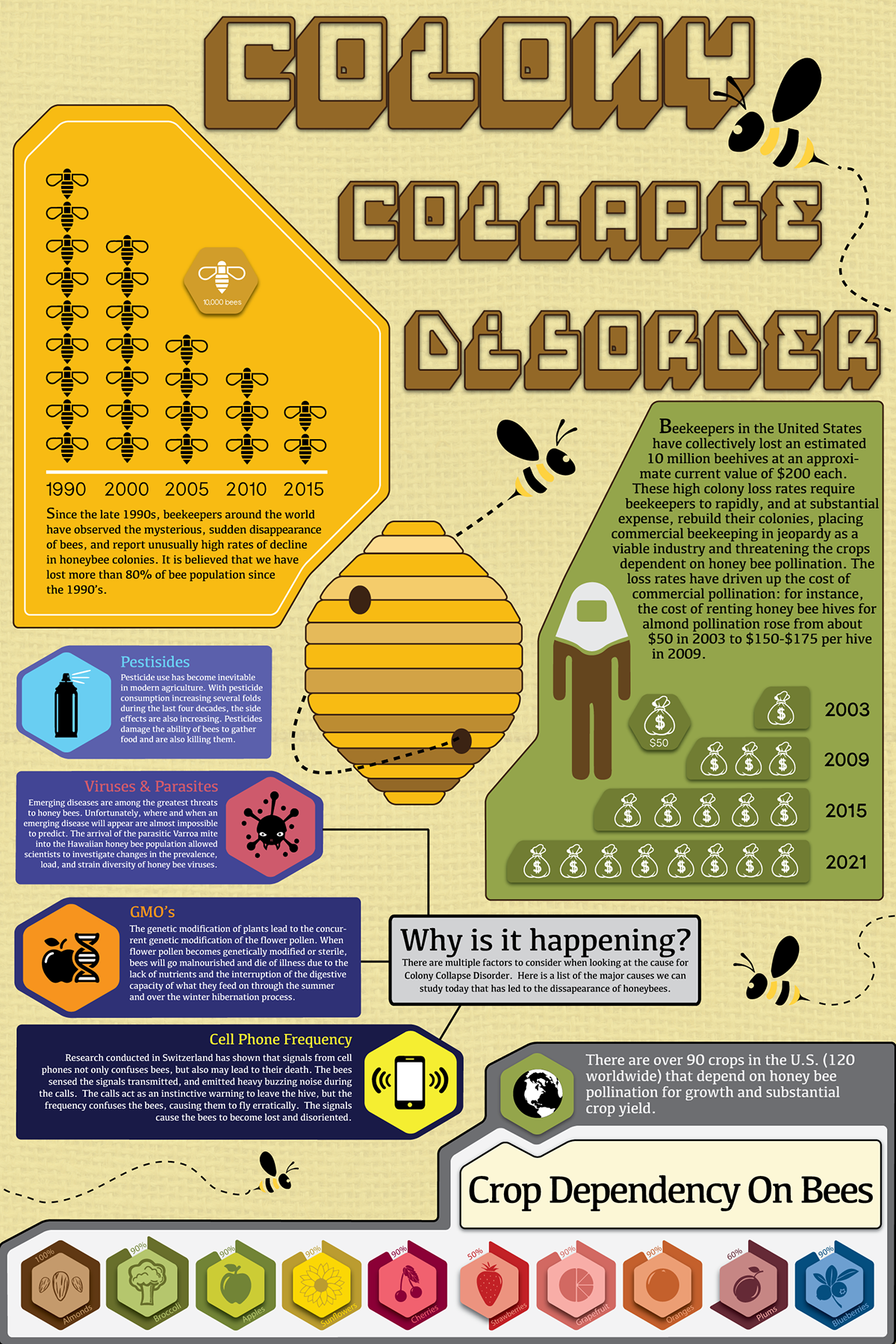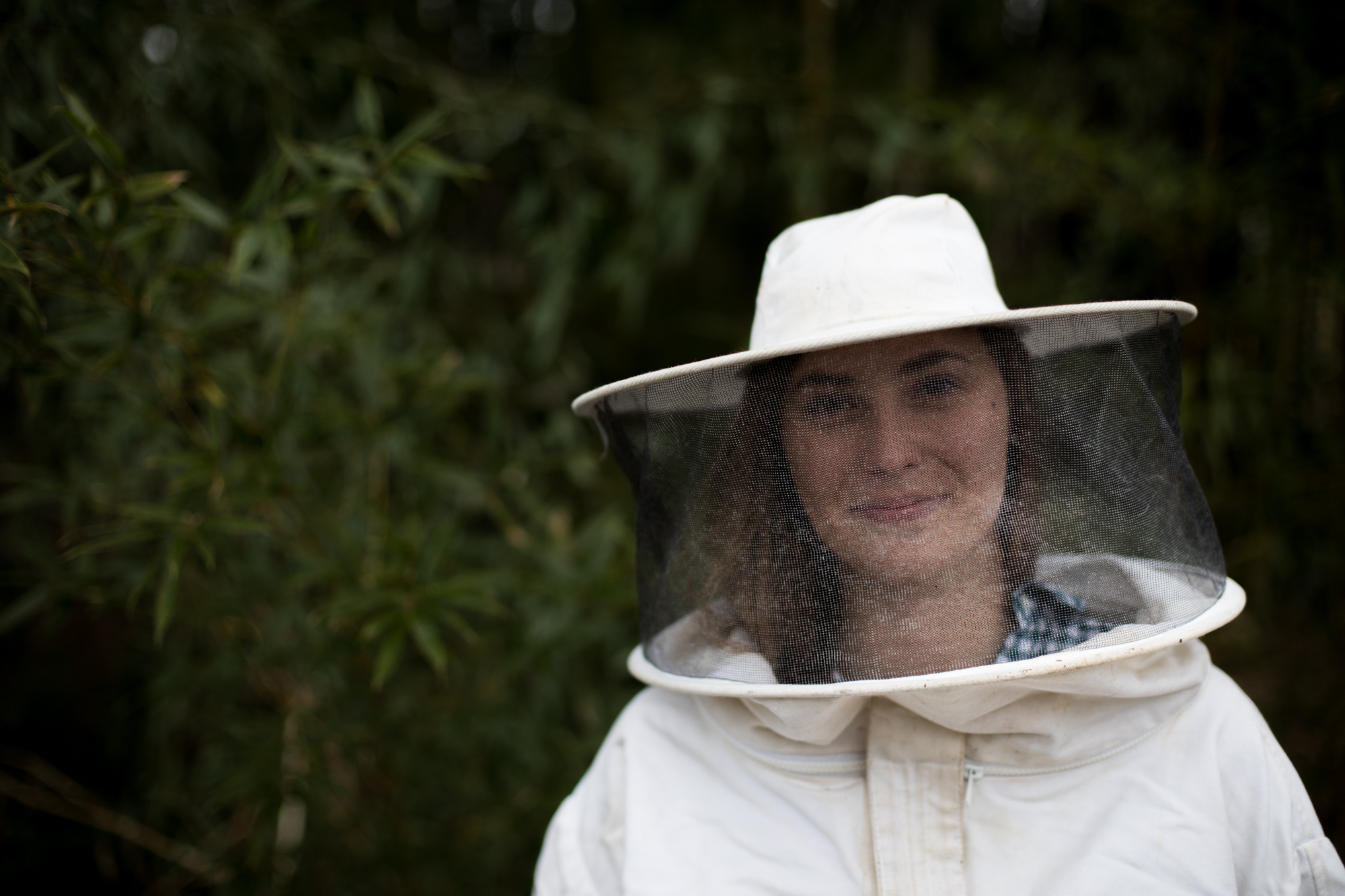At the grocery store, blueberries come in a box. But months before that, they started out
on a bush, a bush that needed soil, water, fertilizer and finally, the help of a tiny insect --
that industrious pollinator, the honey bee.
In 2017, nearly 2.7 million honey bee colonies pollinated more than twenty kinds of
crops across the 50 states. If that wasn’t enough, in 2016 honey bees produced 162
million pounds of honey, a staggering amount when considering a single female worker
bee makes less than a teaspoon in her lifespan.
Unfortunately, the length of that life span may be growing shorter. Between March 2016
and April 2017, the average U.S. beekeeper lost 33 percent of their honey bee colonies,
according to the Bee Informed Partnership, a non-profit run by beekeepers, scientists
and epidemiologists. At peak population, as many as 80,000 bees make up a colony.
David Tarpy, a North Carolina State University entomology professor who specializes in
honey bee biology, said the high mortality rate of the country’s honey bees can be
attributed to the confounding effects of pesticides, poor nutrition, loss of genetic
diversity and in particular, the parasitic varroa mite. The tiny mites, less than 1.5mm
long, suck blood, shorten the lifespans and cause mutations in their hosts.
“Varroa mites are kind of public enemy number one,” Tarpy said.
The mites can do even more damage when colonies are weakened by pesticides. In
2006, scientists began researching how neonicotinoids, a class of insecticides used
around the world, may negatively impact bees ability to forage for food. Bees are more
susceptible to pesticides if they are poorly fed -- bees not only need a sufficient supply
of nectar, which is put at risk by habitat change, but a diverse diet, which can be difficult
as more farms turn towards monoculture.
The final issue, of genetic difficulties, occurs when beekeepers grow new hives from old
ones. To combat bee losses, beekeepers will split a healthy colony into multiple hives,
establishing new queens who can lay up to 3,000 eggs a day. Without careful selection
during this process, genetic traits that promote healthy and productive bees can
become rarer.
Losing bees has always been a part of the beekeepers’ world, especially when
wintertime hits hungry colonies. But for the last 10 years, winter colony losses have
been higher than beekeepers deem acceptable, the BIP survey reported.
“It’s harder to keep bees now than it used to be,” said Randall Austin, a 13-year
beekeeper and member of the Orange County Beekeepers Association.
Bee reports that document the reduction from 6 million colonies in the 1950s, when
every family farm had a hive, to the 2.7 million colonies modern large-scale
agribusinesses move around on flat-bed trucks may seem to show an out-of control
decline in honey bees. But because beekeepers can manage their populations, the
honey bee won’t go extinct. That fact doesn’t make the larger die-offs easier for their
Keepers.
“Losing your hives is like losing a part of your family,” said Leigh-Kathryn
Bonner, the owner of Bee Downtown.
Bonner’s “bees-ness,” as the company calls it, is one of the many organizations in the
Triangle working to promote honey bee health. Bee Downtown maintains hives for
businesses and corporations in urban areas like downtown Durham, keeping bee
populations thriving in urban areas.
The OCBA also promotes bee health by running a 10-week bee school to teach good
colony management practices, which keep disease and parasites like the varroa mite
from spreading.
“I want my neighbors to know what they’re doing,” said Austin, who works with the
school. “If they don’t, their problems can spread to my bees.”
Tarpy hopes that research on genetic diversity will also help to make bee colonies better
able to survive the parasite and pesticide threats. Tarpy is involved in NC State’s Queen
and Disease Clinic, which tests reproductive quality and health of beekeepers’ queens.
Genets will be a component of reducing varroa mite stress, but not a cure-all, Tarpy
Said.
“Dealing somehow with varroa is really critical,” he said. “Increased habitat is another
way, to make sure bees are not nutritionally stressed.”

